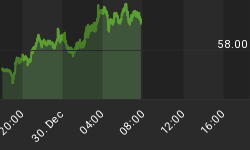This is an excerpt from a Resource Stock Guide Newsletter dated June 6, 2009.
Since early May, the most dramatic events have occurred not in the stock market but in the bond market. Yields for the 5-year T-notes surged by almost 40% while the yields for the 10-year T-Bonds rose by almost 30% in the past 5 weeks. Both benchmarks have broken their multi-year downtrends in the past week.
The 10-year yield is now approaching 4.0% while less than half a year ago it was only at around 2.0%. Short end yields also soared last week. 3-month T-bill yields rose by more than 40%, while 2-year yields appreciated by 37% and are now yielding 1.32%.

While this is all happening, the stock market remains strong. Does this mean that the Fed & the federal government have been successful in their reflationary policy and that money is leaving bonds and going into stocks?
Are the short term yields rising in an anticipation of a rate hike by the Fed in September? And most importantly, are the longer term yields rising in an expectation of a return of economic growth? Finally, does this in sum mean that we are in early stages of an equity bull market and a gold bear market?
We certainly don't think so.
The 10-year treasury yield is determined by two components: (1) real GDP growth expectations and (2) inflation expectations. When the majority of economic indicators (despite some recent improvement) remain in a deeply recessionary territory, it would be erroneous to forecast any near term economic growth. It is most probable that when the growth does return, it will be rather sluggish.
The main reason for this is that the world's developed economies will continue to struggle through the current deleveraging cycle which could last years.
It becomes apparent why money is leaving bonds if we take a look at the inflation expectation metrics.

As for the spike in the short term yields - it appears to be only a temporary occurrence caused by what was considered to be a better than expected non-farm payroll report. In reality, the unemployment situation remains horrible. The economy lost 345,000 jobs last month while the unemployment rate rose to 9.4% and will reach double digits before too long. The US economy needs to add about 200,000 per month in order to keep up with the population growth and keep the unemployment picture steady.
Market pundits insist that unemployment is a lagging indicator but let's remember that the mortgage default rate and many other economic perils are almost directly affected by this "lagging indicator". The roots of this economic crisis lie in the housing/credit bubble and the subsequent mortgage crisis and deleveraging. Higher unemployment will lead to more mortgage defaults further undermining the banking sector and fueling the deleveraging process.
Rising yields along the entire yield curve have led to just one indisputable result: mortgage rates have now risen from 4.75% a few weeks ago to 5.45% on Friday. The ability of the Fed to control the mortgage market is practically non-existent and despite its attempts, the MBA refi index fell by 43% in the past four weeks. Liquidity is shrinking again. How could one believe that the Fed could soon afford to begin fighting inflation?
What does all of this mean for gold and gold stocks? The market views gold above all else as an inflation hedge. Providing excellent evidence for this is an almost ideal correlation between inflation-protected TIPS and gold.

Soon the illusions about the Fed's intent to begin fighting inflation will disperse and gold's correction will end. What we have been witnessing in the gold market in the past 15 months is a long-term bullish consolidation. The most probable resolution to this gold consolidation is the beginning of a new bull phase in the next several months.
















